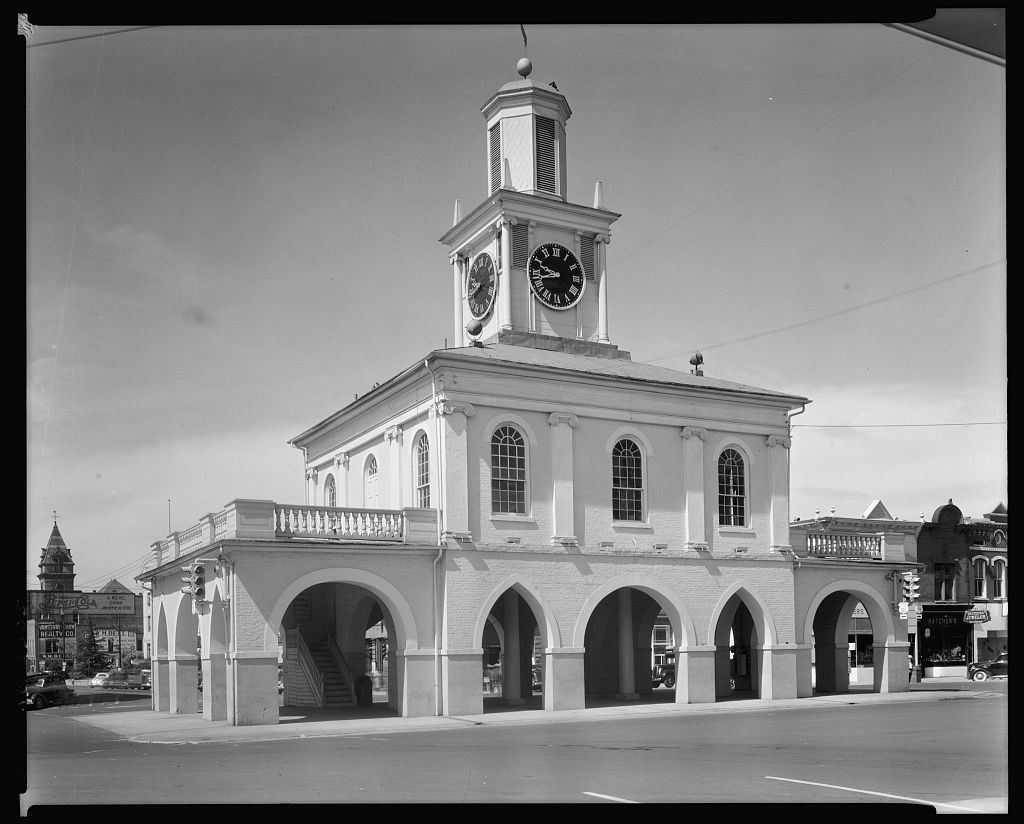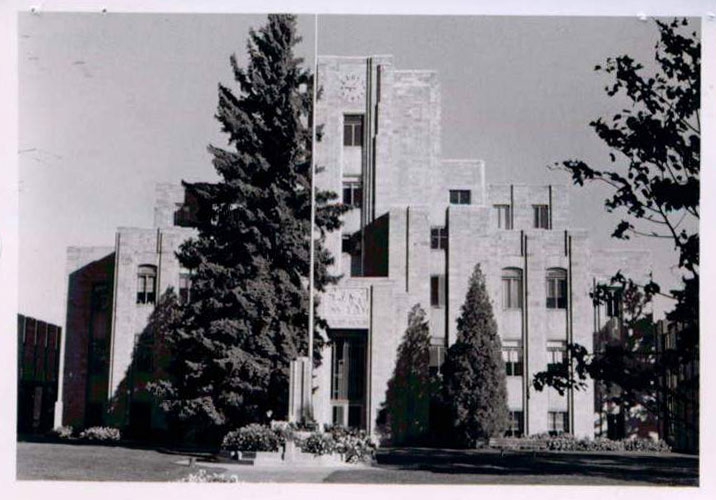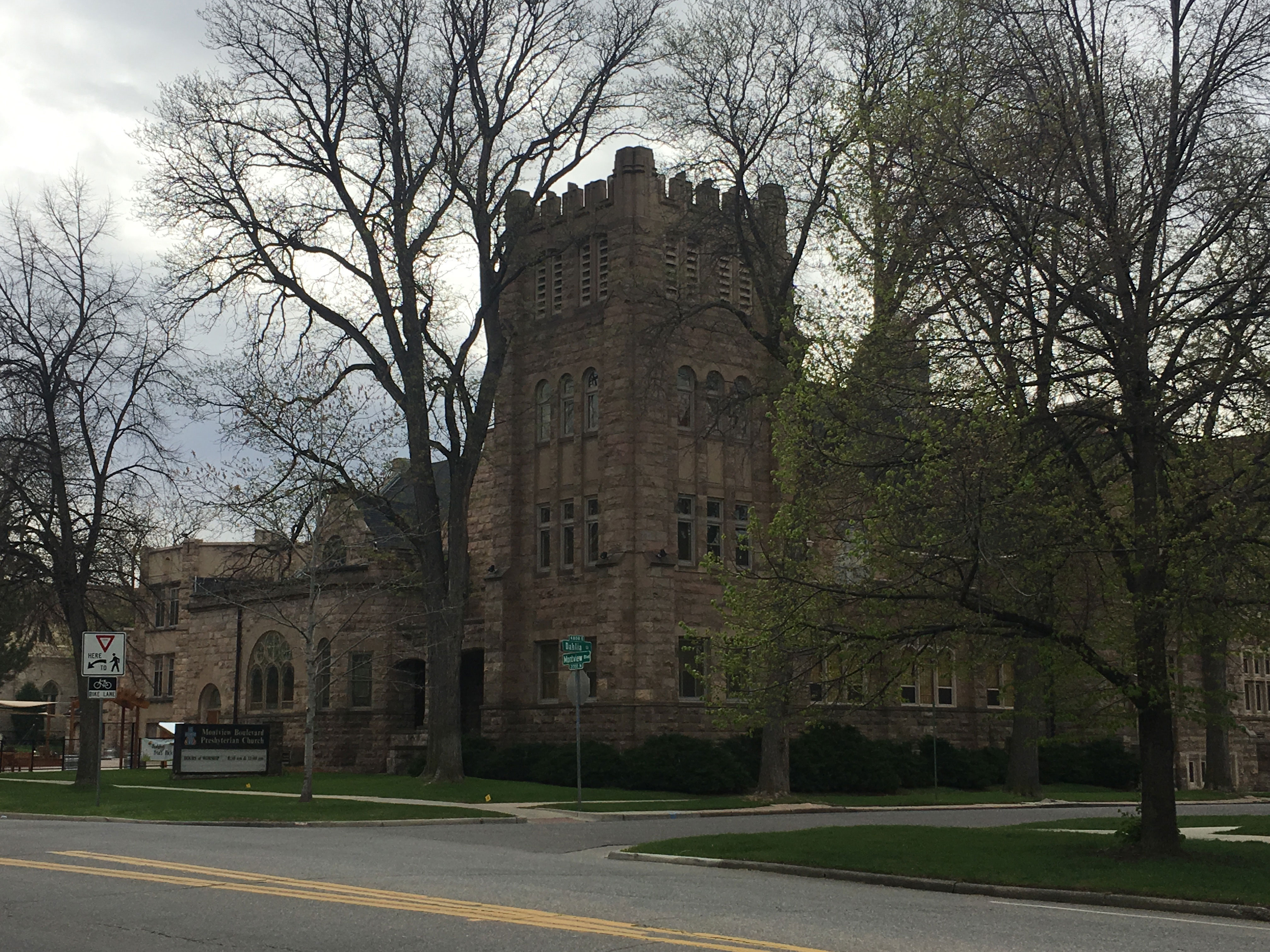Story
Burning for Justice: Protest, Progress, and Historic Preservation
On May 30, relatively early in the protests over George Floyd’s murder, the Market House in Fayetteville, North Carolina, was set ablaze. The Market is a classic southern-style building of the antebellum period, made of red brick with a stark white cupola. It was added to the National Register of Historic Places in 1973, and became a National Historic Landmark soon after. Only three percent of more than 90,000 places listed in the country's National Register of Historic Places are recognized as National Historic Landmarks.

Old Market House, Fayetteville, Cumberland County, North Carolina. 1935.
The National Register’s “significance statement” for the Market House is a single page. The building was listed for its unique dual-use design for both commerce and government. A large portion of the report describes in great detail the arches in the arcade and balustrades punctuated by pedestals.
The building is identified as a meat market. Nowhere in the nomination is the word “slave” used. Nowhere does this listing discuss the enslavement of African Americans and the brutal human trafficking that went on under the carefully described masonry archways. Not unlike arson, that omission was a deliberate and violent act.
No one can reasonably deny that current historic preservation practices and frameworks in the United States uphold a culture of white supremacy. Only eight percent of the properties listed in the National Register of Historic Places relate to underrepresented communities and/or women, according to the National Trust for Historic Preservation. Only two percent relate explicitly to African American history. In other words, 92 percent of the properties listed in the National Register of Historic Places relate to the lives, industries, and designs of white men.
Here in Colorado the picture is even worse. Of the 1,586 properties in this state listed by the National Register, only 4.2 percent are directly related to the history of women and minority communities. A vast majority of those 67 sites have been added over just the last ten years.
When just one percent of preservationists are Black, it is easy to see why two percent of our historic sites are related to African American history. The field of historic preservation desperately needs more diversity. Are there some ways we can begin now to achieve more substantial and tangible diversity in historic preservation?
A partial answer lies in amending already-listed properties in order to more fully capture the history that occurred there or for which they are symbols.
Here in Colorado there have been listings amended to widen the story told. These listings create the tangible space for larger, more diverse audiences. One example is the Boulder County Courthouse, which was originally listed in the National Register for its architectural significance as an Art Deco building in 1980. In 2018, the nomination was amended to recognize the role of Clela Rorex, a county clerk who issued some of this country’s first same-sex marriage licenses while working inside the building. (For more on this history, listen to the gripping inaugural episode of History Colorado’s podcast, Lost Highways: Dispatches from the Shadows of the Rocky Mountains.)
The 1910 Montview Boulevard Presbyterian Church joined the National Register in 2004. Not unlike Fayetteville’s Market House, its significance statement initially focused on architecture. Following a 2017 amendment, the church is now noted for its important social history as the site of a multi-denominational community preschool, the establishment of the Park Hill Action Committee (PHAC) to improve race relations in the Park Hill neighborhood, and a 1964 speech by Dr. Martin Luther King, Jr., to a crowd that overflowed into the street.
Listings are just one facet of what needs to be addressed in historic preservation. The Black Lives Matter movement has prompted us to once again evaluate how we approach diversity and inclusion as a movement, a discipline, and an industry. Right now, communities are telling the historic preservation world that what they see around them does not reflect a history that is either fair or authentic. Some monuments are coming down, some buildings are burning. Embracing this may be the first step in historic preservation growing into a truly inclusive movement.
Further reading
The African American Cultural Heritage Fund has invested “$4.3m in 60 preservation projects” in just the last two years, and has helped to save vulnerable historic sites from destruction.
The Texas Freedom Colonies Project integrates preservation, oral histories, community organizing, and social justice to find and record the important places that were built by African Americans.
In her work, Dr. Andrea Roberts tells us that to become a socially just movement, white preservationists must realize that preservation will look different than what is expected.
At the beginning of June 2020 Twisted Preservation blog laid out nine characteristics of historic preservation that reinforce bias and racism in the movement.
The mainstream history of America’s historic preservation movement gives ownership and authority to affluent white women as protectors of the nation’s past. For a nuanced discussion of the multiple origins of historic preservation, check out Giving Preservation A History.
Dr. Jeremy Wells calls for changes to cultural resource laws to prohibit conflicts of interest, change training of students, and demand that federal agencies charged with overseeing these laws provide more public transparency.
Archaeologist Claire Baxter carefully contextualizes the roles that monuments and statues play in society, not as objects of history but as reflections of contemporary societal values and political brokerage.


